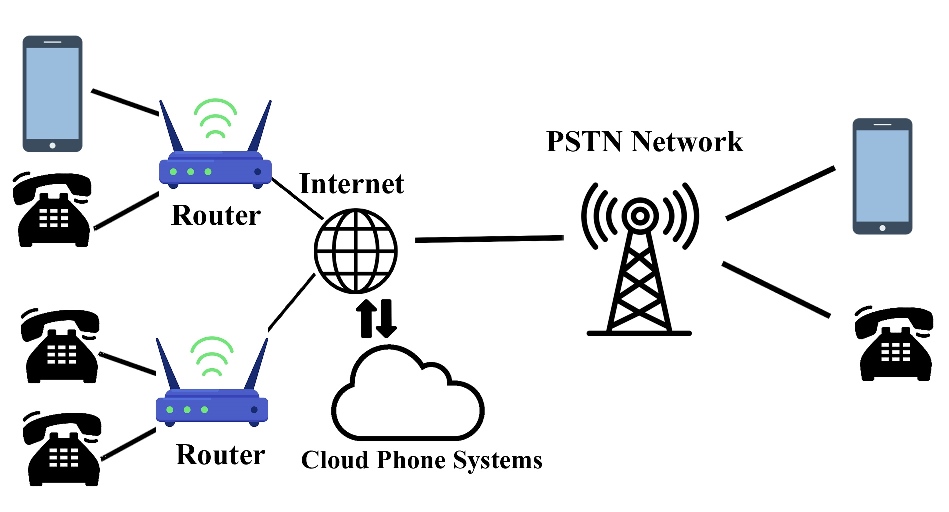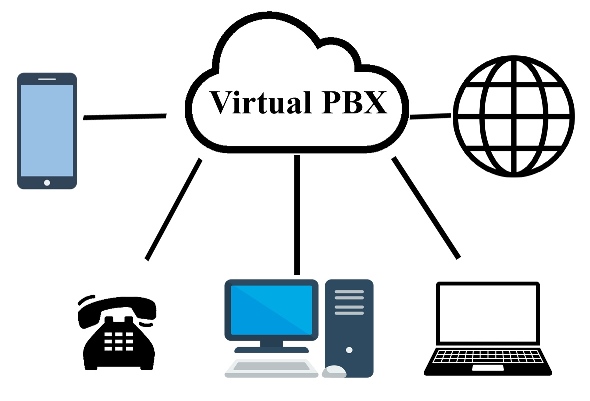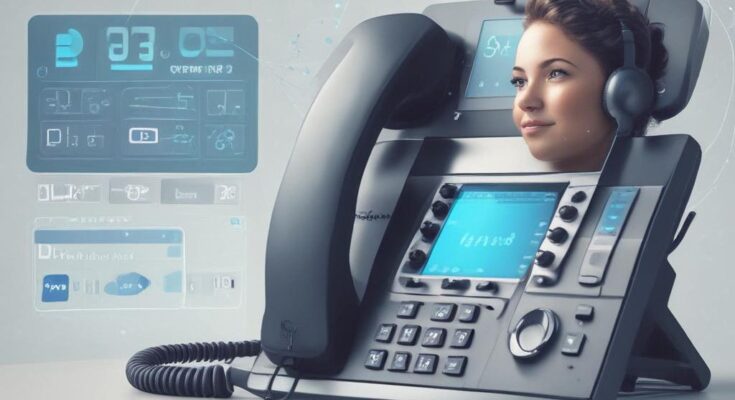Direct Inward Dialing (DID) is a simple phone service that lets people call a specific person or department in a company directly, without needing to talk to a receptionist or go through an automated menu. This makes communication faster and smoother for everyone.
Many businesses use DID to save time, cut costs, and make it easier for customers to connect with the right person quickly. It also allows companies to have many phone numbers without needing a big, complicated phone system.
In this post, we will explore how work direct inward dialing system, explain its benefits, and why more companies are adopting this feature to improve their phone systems.
Table of Contents
Understanding Direct Inward Dialing (DID)
Direct Inward Dialing (DID) is like a phone service that provides calls to specific people or calls to specific departments within company, without any receptionist or through any automatic system that provide menu. This system is best for the businesses communication, reduces costs, provides faster communication, and provides smoother communication for everyone.
In today’s fast-paced business world, having a flexible and reliable communication system is vital. Direct inward dialing provides a solution that benefits both the company and its clients. This service allows businesses to have a large pool of telephone numbers while maintaining a small physical phone system.
In this post, we will explore how work direct inward system, its benefits, and why more companies are adopting this feature to improve their phone systems.
How Does Direct Inward Dialing Work?
Direct inward dialing works through allowing an business enterprise to assign person phone numbers to personnel, departments, or even specific groups inside the agency. These numbers are linked to the corporation’s critical cellphone device, frequently a personal branch alternate (PBX) or a cloud-primarily based smartphone machine.
When a person dials the DID variety, the decision is routed at once to the assigned extension without the need for an operator or receptionist to answer and transfer the decision. This lets in customers or customers to attain the suitable individual or department extra efficaciously.
One of the principle blessings of direct inward dialing is that it could appreciably lessen the time customers spend waiting in call queues. With DID, they can pass the principle switchboard and at once hook up with the supposed recipient, making sure a quicker response time and a more streamlined customer service enjoy.
The Benefits of Using Direct Inward Dialing
There are severa advantages of imposing direct inward dialing in your commercial enterprise verbal exchange method:
1. Improved Customer Service
By presenting direct inward dialing numbers to customers or customers, organizations can ensure that calls are routed without delay to the proper character or department. This reduces the chances of customers being transferred multiple times, which can be irritating for them. It leads to faster resolutions of issues and an typical better enjoy.
2. Cost-Effective Solution
Traditional telephone systems regularly require additional lines or bodily extensions, which may be high-priced to put in and maintain. Direct inward dialing lets in companies to avoid those greater charges by using enabling more than one extensions to share a single bodily line. This is mainly useful for companies with far flung or hybrid workforces.
3. Increased Efficiency
With direct inward dialing, employees can manipulate their calls greater effectively. Instead of getting to answer the principle smartphone line or undergo an automated menu machine, they could get hold of calls without delay on their extension. This permits them to recognition greater on their paintings and less on coping with telephone calls.
4. Scalability
As agencies develop, they want to accommodate more telephone lines and extensions. Direct inward dialing offers scalability via permitting organizations to feature more numbers without the need for full-size infrastructure modifications. This flexibility makes DID a excellent preference for groups that assume growth.
5. Better Call Management
DID numbers may be programmed to route calls primarily based on various factors, together with time of day, availability of the recipient, or precedence degrees. This permits groups to efficiently manage inbound calls and make certain that no call is overlooked.
Why Choose Direct Inward Dialing for Your Business?
Adopting direct inward dialing may be a sport-changer to your business. It offers not simplest sensible benefits but additionally strategic blessings in phrases of customer satisfaction, cost financial savings, and operational performance.
Many companies, especially those working remotely or with a distributed workforce, discover DID numbers to be a sensible and essential a part of their communications infrastructure. It ensures that every crew member has a non-public quantity to manipulate their calls, making communique smoother and extra green.
Additionally, direct inward dialing helps the implementation of name forwarding features, voicemail, and automated attendants, permitting corporations to similarly improve their operations and consumer interplay. These brought functions also can enhance your company’s professionalism, ensuring that calls are always replied right away, even outside of normal enterprise hours.
Types of Direct Inward Dialing Systems
Not all direct inward dialing structures are the equal. There are numerous differing types that organizations can recollect, relying on their wishes and budget.
1. On-Premise PBX
An on-premise PBX system is old system of managing phone calls within industry or Business. With this setup, all calls are routed via a physical server this is located on-web page. While this may be more luxurious because of the cost of hardware and set up, it gives corporations with extra manage over their phone device.
2. Cloud-Based Phone Systems
Cloud-primarily based cellphone systems are greater modern-day and have become more and more famous. With this kind of device, calls are routed through the internet in preference to a physical server. Cloud systems are value-effective and easy to scale as the commercial enterprise grows. Many cloud providers also offer advanced features which include voicemail-to-email, automobile-attendants, and make contact with analytics.

T3. Virtual PBX
A virtual PBX system is a cloud-primarily based solution that does not require any physical hardware. It works similarly to a traditional PBX gadget however is hosted off-website by using a third-celebration provider. This choice is ideal for agencies that need the features of a PBX device but don’t need to make investments inside the upfront charges of on-website online gadget.

Key Considerations When Implementing Direct Inward Dialing
Before making a decision to put in force direct inward dialing on your business, there are several elements to consider:
1. Number of Lines Required
You want to decide how many DID numbers your enterprise needs. This relies upon at the range of departments, employees, or groups with the intention to be receiving calls without delay. Make sure to choose a provider that offers scalability as your enterprise grows.
2. Cost
While DID may be price-effective, you ought to still compare the charges concerned in setting up and preserving the gadget. This consists of the fee of the smartphone device, any hardware requirements, and ongoing service prices.
3. Call Routing Features
Different DID structures provide diverse call routing capabilities. It’s important to pick out a gadget that offers the extent of name control your commercial enterprise calls for. For example, some systems assist you to course calls based on time zones, while others provide advanced functions like name queuing or voicemail.
4. Provider Reliability
Ensure that the DID provider you pick out has a terrific recognition for reliability and customer service. You don’t need to hazard losing calls due to system screw ups or poor customer support when issues arise.
Conclusion
Direct inward dialing is a powerful device which could appreciably enhance your enterprise’s communique system. Whether you’re a small enterprise looking to improve customer service or a huge organisation aiming to streamline operations, DID gives severa advantages. It can prevent money, improve performance, and provide a higher average experience on your customers.
By information how direct inward dialing works and evaluating the nice structures for your desires, you could ensure that your commercial enterprise has the tools essential to reach today’s aggressive market. If you haven’t already carried out DID, it might be time to recall its capability to enhance your communique strategy.
FAQ’s
Q: What is Direct Inward Dialing (DID)?
A: Direct Inward Dialing (DID) is a service that allows callers to reach a specific phone extension directly without needing to go through a receptionist or switchboard.
Q: How does Direct Inward Dialing work?
A: DID works by routing calls to specific extensions within a company, based on a unique DID number, making communication faster and more efficient.
Q: What are the benefits of Direct Inward Dialing?
A: DID improves customer service, reduces costs, increases efficiency, and makes call management easier by directly connecting callers to the right person or department.
Q: Can businesses save money with Direct Inward Dialing?
A: Yes, DID helps businesses save money by allowing them to manage multiple phone numbers on a single system, reducing the need for extra lines or physical infrastructure.
Q: Is Direct Inward Dialing suitable for small businesses?
A: Absolutely! DID is flexible and scalable, making it an ideal solution for businesses of all sizes, including small businesses that want to improve communication.
Q: What types of systems support Direct Inward Dialing?
A: DID is supported by on-premise PBX systems, cloud-based phone systems, and virtual PBX systems, offering businesses different options based on their needs.
Q: How can Direct Inward Dialing improve customer experience?
A: DID allows customers to reach the right person or department directly, reducing wait times and improving the overall customer experience.




